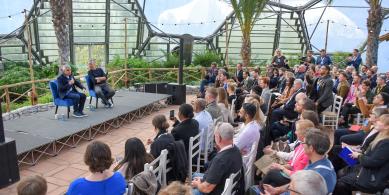A target audience underpins every marketing strategy and, as purse strings tighten, and robust results are required to justify every creative decision, it’s becoming more important than ever for brands collect meaningful audience insights and ensure their work is effective and their budget spent wisely.
Old-fashioned demographic segmentation is far from over the hill; it’s still very useful. From a neuroscience perspective, for example, there are clear biological differences between men and women which sometimes result in a different response. Thus, separating an audience out by gender is a logical starting point. To create a more meaningful picture, layering demographics with analysis based on behaviours and claimed attitudes can build a three-dimensional picture of who people are and what they do, strengthened by the opportunity to express how they think and feel.
But even with this more detailed picture, three-dimensional segmentation can fail to account for the nuanced interaction that takes place between viewers and the content they consume - often because their responses are too complex to understand by simply asking questions.
When it comes to understanding attitudes and actions that drive future decision-making, subconscious responses can deliver a highly perceptive “fourth dimension” of segmentation. In contrast to other research methods, neuroscience can delve deeply into these subconscious responses. It’s not about reading minds but rather shedding light on the cognitive processes taking place in the brain that can have a strong impact on our attitudes and decisions.
For example, traditional research often shows that existing customers, or brand users, respond more favourably to ads for those brands than those who aren’t as familiar with them. Whilst this might be unsurprising, research measuring an audience’s subconscious responses reveals how the brains of brand users are able to pick up on very subtle brand cues before they are even aware of having ‘seen’ the brand in the ad; and that the ultimate effect of this may not always be wholly positive.
In fact, people familiar with a brand may respond more positively to a particular ‘cue’ within a scene that causes them to process that particular brand, even before the logo and other brand iconography has been revealed. The fact that the branding is processed is of course a positive thing, but early brand identification it can also have the effect of causing viewers to tune out from the rest of the ad. Having identified what the ad is about, the brain has less reason to continue working hard, and memory encoding can fall; meaning that subsequent brand or product messages may be missed.
A study conducted by Neuro-Insight for a service company gives a good example of this. Existing customers responded strongly to subtle early branding but, once they had identified the brand, responses fell away. As a result, brand linkage was good amongst this group, but they failed to pick up the more detailed service messages that were featured later in the ad. The net effect was that, at a conscious level, both users and non-users played back similarly low levels of response to those detailed messages; but the underlying reasons were very different. Non-users simply weren’t very engaged in the ad as a whole, whereas to users the ad was working to reinforce brand perceptions, but was failing to build on those because the early brand cues were a giveaway.
Such an example reveals how, the insight derived from neuroscience research can be used to segment audiences based on brain response, adding another layer of actionable insights for marketers. Traditional segmentation techniques are not dead - they still provide a useful starting point – but marketers entering the “fourth dimension” of market research will find that they are able to draw on a much more holistic picture of their audience as a basis for effective targeting.
By Heather Andrew, CEO, Neuro-Insight.
Newsletter
Enjoy this? Get more.
Our monthly newsletter, The Edit, curates the very best of our latest content including articles, podcasts, video.
Become a member
Not a member yet?
Now it's time for you and your team to get involved. Get access to world-class events, exclusive publications, professional development, partner discounts and the chance to grow your network.




